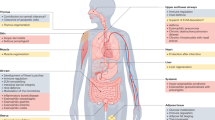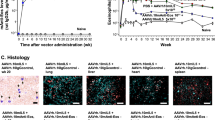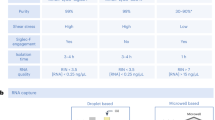Abstract
IN an earlier investigation1, using the quantitative methods developed in this laboratory2, it was shown that very large reserves of mature and nearly mature eosinophils are present in the bone marrow of normal guinea pigs. The question arose as to the circumstances in which these cells might be discharged, and for this reason it seemed important to carry out a quantitative investigation during the circulatory eosinophilia which follows the re-injection of foreign protein in sensitized animals. Percentage changes in bone marrow eosinophils have been noted in these conditions3.
This is a preview of subscription content, access via your institution
Access options
Subscribe to this journal
Receive 51 print issues and online access
$199.00 per year
only $3.90 per issue
Buy this article
- Purchase on SpringerLink
- Instant access to full article PDF
Prices may be subject to local taxes which are calculated during checkout
Similar content being viewed by others
References
Hudson, G., Amer. J. Physiol., 198, 1171 (1960).
Yoffey, J. M., Quantitative Cellular Hœmatology (Thomas, Springfield, 1960).
Homma, E., Virchows Arch. path. Anat., 233, 11 (1921).
Hudson, G., J. Anat., 92, 150 (1958).
Author information
Authors and Affiliations
Rights and permissions
About this article
Cite this article
HUDSON, G. Discharge of Marrow Eosinophils following Re-injection of Foreign Protein. Nature 195, 721 (1962). https://doi.org/10.1038/195721a0
Issue date:
DOI: https://doi.org/10.1038/195721a0
This article is cited by
-
The peripheral kinetics of human radiolabelled eosinophils
Virchows Archiv B Cell Pathology (1976)



